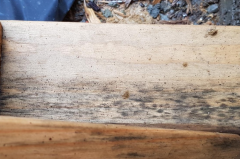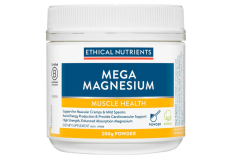Spores in the air are usually of a fungus or mould nature. This group of fungi also include mushrooms and yeast. Fungi is both indoors and outdoors. It can grow on anything. Some places you may find fungi and mould on are your floors, roof, walls, doors, clothes, and cupboards.
There are many different types of spores. Mould normally looks like small fuzzy spots, a stain or a smudge. If your home has problems with being damp and mouldy you need to get the problem fixed urgently as this can have a big impact on all your health and continual wellbeing.
Causes of spores in your home or workplace
Spores is a natural substance that plays an important role in our ecosystem. It speeds up the decomposition of organic materials in nature. When it is inside is when it becomes a problem. Mould grows in damp, poorly ventilated and wet areas. If you have mould in your home, you might smell it before you see it. If you can smell the mustiness of mould you need to start checking places in your home where there isn’t much air circulation. This can include behind furniture and paintings, at the back of cupboards and wardrobes. Sometimes it’s hidden within wall cavities. Other signs can be water stains, condensation on the inside of windows, peeling or cracked paint, peeling wallpaper and puddles of water forming under or around the house.
Types of spores causing mould in your home
There are thousands of different species of mould. Some of the common ones in Australia are aspergillus which is a green or grey mould that you will mostly find on food and in air-conditioning systems. People with healthy immune systems can be affected by breathing it in over a period of time and it will lower your immunity. In people with weakened immune systems, it can lead to an infection in the lungs or sinuses.
Another type is Cladosporium, a green or brown mould with a furry type texture. This is found on household items like carpets, material, upholstery, timber furniture, food and unclean refrigerators. This is considered the primary source of mould and fungal allergies. Stachybotrys or black mould, is a dark green or black mould with a slimy look. This grows in areas that are damp, wet or humid. When left over a long period of time it will produce toxic spores. If you have any mould in your home or work, it is best to remove it urgently. Mould can make you seriously ill if breathed in over a length of time.
How to get rid of mould and fungus exposure
When removing mould from your home make sure you have ample ventilation. Open all doors and windows. You should wear protective clothing like a shower cap, rubber gloves, P1 or P2 face mask and goggles. You can get these from stores like Bunnings or other hardware stores. Don’t brush the mould, as this can flick spores into the air. Avoid vacuuming mould unless your vacuum has a good HEPA filter, which traps particles rather than recirculates them back into the air.
The best way to remove any type of fungal material is to wipe it away using a household cleaner or white vinegar and a microfibre cloth. Rinse the cloth regularly. If you’re using a store-bought specialist mould-removal cleaning product, always follow the instructions on the label. Once finished dry the area thoroughly by letting the air circulate. The best way to control mould is to find the source of the moisture and fix it. If you don’t it will regrow.
Effects on your health
When mould reproduces, it makes tiny particles called spores. Many people will experience health problems from contact. When spores spread they affect your health. Health problems can be serious especially for people who have existing respiratory issues or a compromised immune system.
Alison had a whole range of unexplained symptoms. Foggy head, some sinus, occasional itchiness, feeling tired despite the fact she had a good, healthy diet. Alison was not overweight, managed her stress reasonably well, exercised twice a week and managed to spend her weekends out in the sunshine with her family and dog. No Alison was not allergic to dogs nor did her sensitivity test show dogs or cat sensitivities. An





